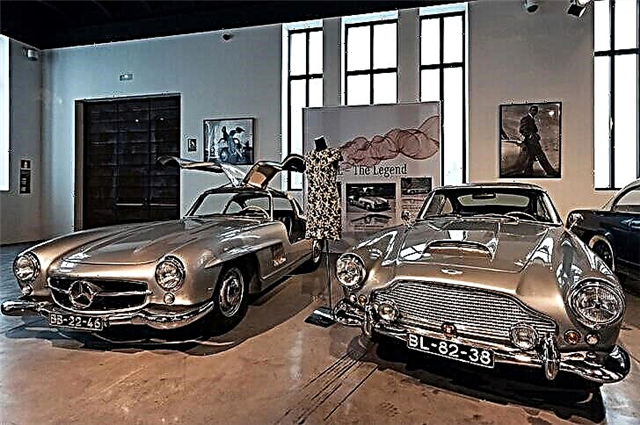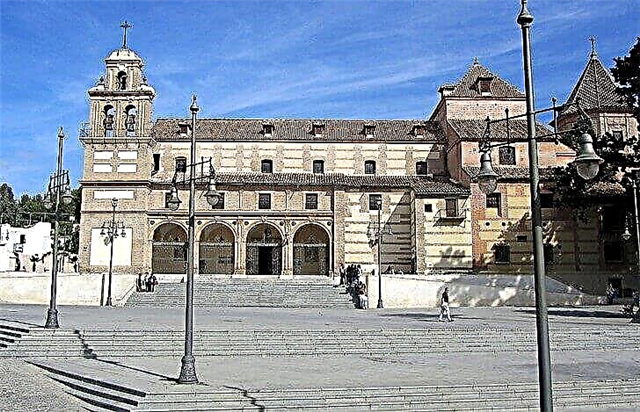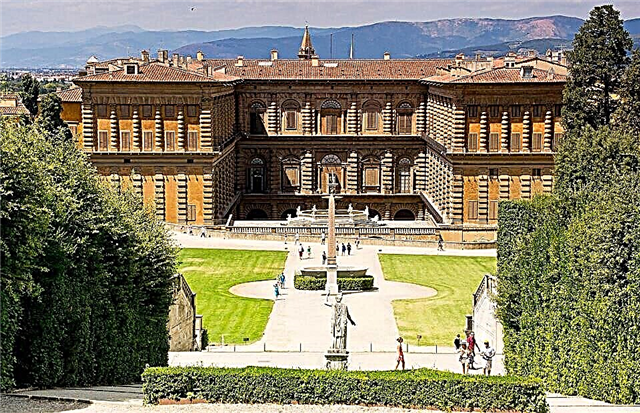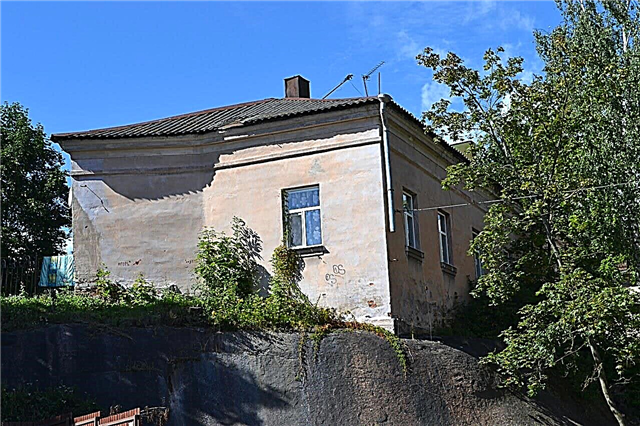Malaga is a popular resort located on the Costa del Sol. The tourism industry began to develop in the city and its surroundings at the end of the 19th century at the initiative of a group of local industrialists. Unfortunately, as a result of the revolutionary upheavals of the early 20th century, an impressive part of the city's historical heritage was destroyed. But there is still a lot left - today tourists can admire the ancient Arab fortresses, the Roman theater, medieval churches and Baroque mansions.
The second rise of the tourism industry in Malaga came in the 50s and 70s. XX century. It was then that the brand "Costa del Sol" was created, cruise traffic and the infrastructure of city beaches began to develop. Holidays in Malaga are, first of all, excursion tourism with the opportunity to sunbathe on the comfortable beaches of the sunny coast.

The best hotels and hotels at affordable prices.
from 500 rubles / day
What to see and where to go in Malaga?
The most interesting and beautiful places for walking. Photos and a short description.
Malaga cruise port
Malaga's cruise harbor is one of the largest in the Mediterranean. From here, huge liners go on a sea tour. There is also a mooring place for passenger ships that arrive at the port of Malaga as part of a Mediterranean voyage. The pier has existed since the time of the founders of the city - the Phoenicians; it was widely used by the Arabs during the Moorish rule. Large-scale modernizations of the harbor were carried out in the 1980s and 90s.

Malaga fortress
The fort was built by the Arabs in the 8th century, from the 11th century it was used as the seat of the governor of the Emirate of Granada in Malaga. The fortress rises on a hill in the central part of the city. It was previously connected to the now destroyed outer city wall. The Bastion of Malaga is a type of Moorish military citadel (alcazabam), which was built to protect the city from enemy attacks.

Gibralfaro Fortress
Gibralfaro is another Moorish fortress of Malaga, connected to the alcazaba by a passage, and forms a single complex of defensive structures with it. The stronghold was erected in the X century during the reign of Caliph Abd ar-Rahman III. Four centuries later, the citadel was rebuilt at the behest of Yusuf I, the ruler of the Emirate of Granada. Today, on the territory of the fort, there is a museum, where collections of medieval weapons and armor are exhibited.

Malaga Town Hall
The building of the city hall, built at the beginning of the 20th century in the neo-baroque style with elements of modernism. The facade of the town hall is decorated with picturesque bas-reliefs. Its spacious halls house valuable collections of paintings. In front of the building, the Pedro Luis Alonoso Gardens are laid out in the tradition of Spanish-Arab park art. In 2010, the town hall and gardens were declared historical monuments.

Plaza de Toros "La Malagueta"
Bullfighting arena located in the eastern part of Malaga. The stadium was erected in the 19th century according to the project of H. Rukoba in the neo-mudejar architectural style. "La Malagueta" belongs to the arena of the highest category, which means that the most grandiose performances are held here, timed to significant dates. The building houses the Museum of Bulls. A. Ordonez.

Malaga Automobile Museum
The museum exhibits an extensive collection of vintage cars. The exposition is located on the territory of a former tobacco factory. Collected here are examples that demonstrate the history and progress of the automotive industry. The exhibits are divided into thematic sections, among which are “Golden 20s”, “Designer Cars”, “Dolce Vita”, “Belle Époque”, “Popular Cars” and others.

Museum of glass and crystals
Private collection of arts and crafts, owned by G.F. Prieto, opened in 2009. Located in a historic mansion of the 18th century. It consists of glass artifacts dating back to the 13th century BC. e. - XX century A.D. The total number of exhibits is about 3 thousand. In addition to glass and crystals, the museum exhibits paintings by artists D. Riley and A. Hanneman, who worked in the 17th century.

Malaga Picasso Museum
The great Spanish surrealist Pablo Picasso was born in Malaga. He made an invaluable contribution to the development of such areas of modern painting as Cubism and Post-Impressionism. On the territory of the Buenavista Palace there is a museum dedicated to the work of the great master. The collection consists of 285 paintings that were donated to the city by the painter's family. The gallery was opened in 2003.

Carmen Thyssen Museum
The gallery opened its doors in 2011. The collection consists of works by Spanish painters of the 19th century, especially the works of masters from Andalusia. The works of art belong to Carmen Cervera, the widow of the industrialist and baron G.G. Thyssen-Bornesima. The city owns the paintings on lease until 2025. The collection is located on the grounds of the Villalon Palace, built in the 16th century.

Center for Contemporary Art
The museum specializes in works of contemporary art created in the last third of the 20th century. It was organized in the building of the former city market located in the central part of Malaga. Permanent exhibitions and temporary exhibitions are located on an area of 6 thousand square meters. The territory of the Center for Contemporary Art is also used for film screenings, organizing art workshops and lectures.

Russian Museum in Malaga
A branch of the Russian Museum was opened in Malaga quite recently - in 2015. It is located in a former tobacco factory, occupying an area of 2.3 thousand square meters. In addition to permanent exhibitions, the museum houses educational centers, cinemas and creative workshops. The gallery exhibits works by Russian masters of the 15th-20th centuries. Visitors can admire the paintings of I. Repin, I. Levitan, A. Ivanov, V. Kandinsky, K. Malevich, M. Chagall and many others.

Center Pompidou in Malaga
Spanish branch of the famous Parisian gallery of modern art. The permanent exhibition displays works of art of the XX-XXI centuries, there are works by P. Picasso, F. Bacon, F. Kahlo and other worthy masters. The Center Pompidou also hosts temporary exhibitions of photography, design, architecture and interactive installations using cutting-edge technology throughout the year.

Malaga cathedral
The temple was built in the 18th century on the site of a former Moorish mosque. The construction of the cathedral took quite a long time, the work was carried out in the period 1528-1782. Due to lack of funding, the architects had to deviate from the original plan and build one tower instead of two, which is why the temple was popularly nicknamed "The One-armed Lady". In the architecture of the building, you can see the features of neoclassicism, baroque and gothic.

Basilica of Santa Maria de la Victoria
The basilica was erected in the 16th century on the very spot where King Ferdinand of Aragon camped before the decisive battles for Malaga. The church is dedicated to St. Mary de la Victoria - the patroness and patroness of all Andalusia. The saint is especially loved by the inhabitants of this part of Spain. The main shrine of the temple is a small statuette of Mary with Jesus, dating back to the 15th century.

English cemetery
The necropolis was organized in 1831 thanks to the efforts of the consul W. Mark, representing the interests of Great Britain in Spain. Earlier, all the deceased who did not belong to the Catholic branch of Christianity were buried at night near the seashore. After receiving permission from Ferdinand VII to create their own cemetery, the Protestants were allowed to organize their own necropolis.

Roman theater
The theater is located at the foot of the hill on which the Malaga Fortress rises.It is believed that the structure was built in the last years of the reign of Emperor Augustus in the 1st century. The theater was used for its intended purpose until the 3rd century. Then the Arabs came to Malaga. They partially dismantled the stage and used stones to build defensive structures. The Roman theater was accidentally discovered in the middle of the 20th century; excavations were completed only in the 90s.

Constitution Square
The central square of Malaga, located in the historical part of the city. The place has been known since the time of the Moorish Nasrid dynasty, since then it has repeatedly changed its name. Around the square there are administrative buildings of considerable architectural value - the Augustinian monastery, prison and court buildings, as well as city mansions of the past centuries.

Merced Square
Merced Square is located within the eponymous quarter. It often becomes the center of various festivals and celebrations. The fame of the place is added by the fact that there is a house in which the artist P. Picasso was born. Since 2008, the square has been decorated with a monument to the master by F. L. Hernandez. Merced is considered one of the most picturesque squares in Malaga.

Street Marques de Larios
A promenade that crosses the historic center of Malaga and ends at Constitution Square. The alley is specially designed for a leisurely "promenade" surrounded by historic buildings, shopping, relaxing in coffee houses and enjoying the city atmosphere. The street was created in the 19th century according to the project of J. M. Sancho. The place is named after the textile industrialist M. de Larios.

Atarazanas Central Market
The market building is located by the sea. Previously, ships were repaired here. It quite harmoniously combines the features of ancient Moorish and modern architecture. After the restoration, the premises were used for retail space. The market sells seafood, vegetables, fruits, cheeses, meats and numerous local specialties typical of Spanish cuisine.

"Palm Surprise"
An urban park located along the promenade with a magnificent view of the port of Malaga. The park has an infrastructure for a comfortable rest for the whole family. There are playgrounds, comfortable benches, fountains, cafes, lawns with exotic plants. The Palm Surprise design is a vivid example of modern trends in the field of gardening art.

La Farola lighthouse
The lighthouse was erected at the beginning of the 19th century according to the project of H. Maria Peri on the territory of the seaport. The modernization was carried out in 1913, as a result of which the structure was equipped with modern (for that time) optical equipment. During the Civil War in the 30s. La Farola was painted in earthy colors for camouflage purposes, after the end of the active phase of the confrontation, the lighthouse was restored.

Botanical Garden "La Concepcion"
The garden was laid out in the 19th century by H.L. Oyarsabal and A.E. Livermole is a married couple of Spanish aristocrats. They traveled for a long time to European countries after the wedding and, inspired by the beauties they saw, decided to create a new garden in their residence. A specialist from France was invited to develop the design. At the beginning of the 20th century, the territory was taken over by another family, who continued to work on the creation of the park.

Malaga park
A classic Mediterranean park, planted with lush subtropical vegetation and exquisitely decorated with decorative elements. The square is a strip of green spaces (70-80 meters wide), stretching along the embankment. Malaga Park was laid out at the end of the 19th century, at the same time as the city was recovering from the collapse of the wine industry due to the massive destruction of vineyards.

La Malagueta beach
The city beach is located in the resort area of Malaga. It stretches for about 1200 meters along the coast. La Malagueta is an artificial beach. The city authorities specially brought sand here to organize a recreation area for local residents and tourists. A well-developed infrastructure has been created here. In the high season, due to the large number of tourists, there is practically no free space on the beach.












